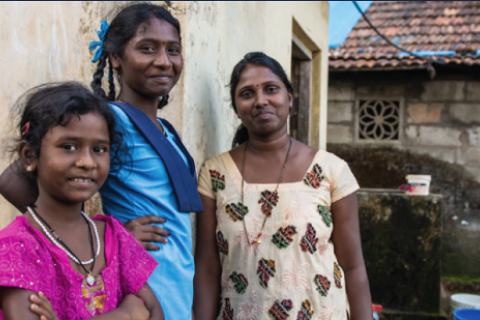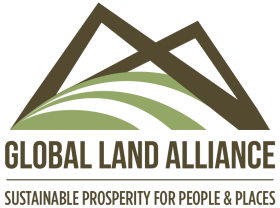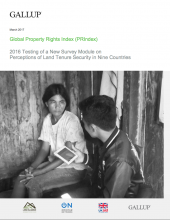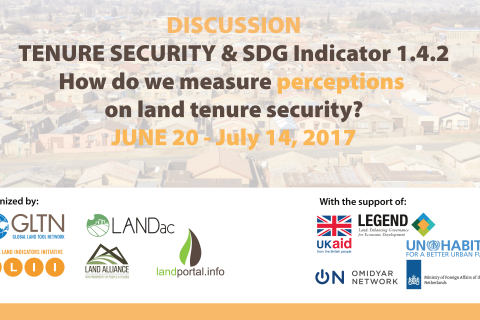PRIndex stands for the Global Property Rights Index, an indicator of citizens' perceptions of the security of property rights, and this page only displays the results of the first pilot and testing phase run in 2016-2017.
The pilot phase of development and testing of the index took place in nine countries (Brazil, Colombia, Egypt, Greece, India, Indonesia, Nigeria, Peru and Tanzania) during 2016 and 2017.
A second phase of data collection, using a new improved methodology and planned for 2018-2019, is currently on-going and new Prindex data for 15 countries are now available on https://www.prindex.net/data/.
Please note that the data collected during the pilot and the data collected during the second phase are not directly comparable, due to the improvements made to the Prindex methodology. A selection of relevant indicators from the new Prindex data will soon be made available on the Land Portal too.
The Global Property Rights Index is an initiative of ODI and Land Alliance supported by Omidyar Network, DFID and other donors. It aims to fill the gap in information about individual perception of tenure security by creating a baseline global dataset to support the achievement of secure property rights around the world.
PRIndex: Interactive indicators
Rate of property documentation
The PRIndex dataset presented here contains indicators based on the pilot survey data collected in 8 countries with nationally representative samples.
Why does PRIndex matter?
Property rights are a cornerstone of economic development and social justice. Data on perceptions of security of property rights are required to monitor global initiatives such as the Voluntary Guidelines on the Responsible Governance of Tenure of Land, Forests and Fisheries and the Sustainable Development Goals (see indicators 1.4.2 and 5.a.1).
However, perceptions of security of tenure have never been assessed at the global level, preventing a clear understanding of the magnitude and nature of citizens' experience of security and insecurity related to crucial assets such as housing and land. PRIndex addresses this gap, creating a baseline global dataset to support the achievement of secure property rights around the world.
What is the methodology?
PRIndex is based upon nationally representative surveys targeting 1,000 individuals aged 15 and older. The initial phase was carried out in eight countries - Brazil, Colombia, Egypt, Greece, Indonesia, Nigeria, Peru and Tanzania - throughout 2016 and 2017. Additionally, a pilot survey with 3,000 respondents was conducted in India, but this data is currently under review.
The sample was selected using multi-stage stratified cluster sampling, allowing for complete spatial coverage of each country, including both urban and rural areas. The data collection and data elaboration were implemented to ensure the highest possible level of quality, with a variety of controls and robustness checks. The questionnaire addressed several aspects related to property rights, including respondents’ perception on the level of security of their tenure rights, the possession and the nature (i.e. formal or informal) of property documentation, as well as aspects related to gender equity.
Additional information about the PRIndex methodology can be found in the first PRIndex report summarising the preliminary findings for the nine-country pilot countries, as well as in a previously published India report.
What is the current status?
PRIndex is a project which is in constant evolution and development. A pilot phase of development and testing of the index took place in nine countries (Brazil, Colombia, Egypt, Greece, India, Indonesia, Nigeria, Peru and Tanzania) throughout 2016 and 2017.
A second phase of data collection, which will increase the set of countries, is currently on-going. New Prindex data for 15 countries, obtained with the updated methodology and thus not directly comparable with the pilot data presented in this page, are now available on https://www.prindex.net/data/. The release of new data for an additional 18 countries is planned for spring 2019.
The indicators presented here represent only a fraction of the data collected during the 2016 pilot phase and aggregate the survey results around two main dimensions: the level of perceived tenure security (secure / somewhat insecure / insecure) and the rate of property documentation (formal documentation / informal documentation / no documentation). This data can be further disaggregated for specific population groups, such as homeowner and renter, or urban and rural population.
Who is involved?
PRIndex is an initiative of Omidyar Network and DFID, being implemented by Land Alliance in association with Gallup, Inc and ODI. A Technical Advisory Group (TAG) of research experts in property rights is providing guidance on the design and methodology of surveys and analysis of data.
What are the main findings?
According to the preliminary results presented in the first PRIndex report, almost 25% of the respondents globally surveyed in the pilot phase feel their property rights are at risk. However, the levels of perceived tenure security may vary significantly among different countries. For instance, while in Egypt 17% percent of the population is concerned that their tenure rights are insecure or somewhat insecure, the same figure reaches 31% when we look at Nigeria.
A high level of variability in the levels of perceived tenure security can also be detected if we look at different population grousps within the same country. For instance, preliminary PRIndex data suggests that homeowners tend to be more confident than renters that they will not lose their house in the foreseeable future.
Interestingly, in India only 20% of the respondents stated they have formal documentation, thus suggesting that the possession of formal property titles might not necessarily increase the perceived level of tenure security - at least not in all socio-economic contexts. For instance, the nine-country pilot survey shows that the rate of property documentation can vary substantially between urban and rural areas.
Related content on the Land Portal
A visit to displaced communities in north Honduras reminded me why we need Prindex
Malcolm Childress visited Honduras in April as part of a fact-finding and speaking delegation sponsored by the US State Department.
On the northern coast of Honduras, palm forests give way to white sands, blue seas and one of the world’s most spectacular coral reefs. But, in a story that will be familiar to observers of land rights worldwide, that beauty has brought developers eager to build, and conflict around the ownership of land occupied and claimed by longstanding Garifuna communities.
Experts Reach Important Consensus on critical Land Indicator
Donors:
Download this Dataset data.
Get all PRIndex pilot data from the Land Portal in one file!
Related SDGs
1.4.2: Proportion of total adult population with secure tenure rights to land












